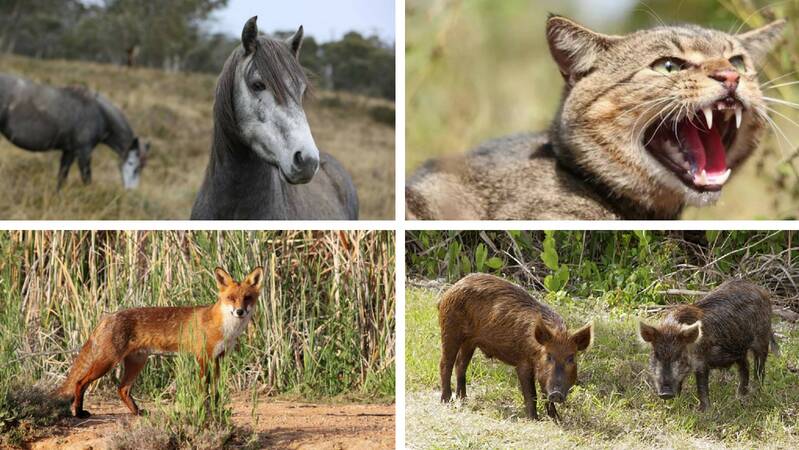
Pest animals are estimated to cause $170 million worth of damage across the state each year.
Subscribe now for unlimited access.
or signup to continue reading
In the Riverina, an honour role of nine pest species – feral goats, pigs, and cats, wild dogs, horses, rabbits, and deer, common carp and European red foxes – has been identified as particularly problematic.
In conjunction with the Regional Pest Animal Committee, the Riverina Local Land Services has committed to seeing the populations of these pests drastically reduced by 2035.
“The plans began on July 1, but pest management is always an ongoing strategy,” said Local Land Services general manager Rob Kelly.
It’s hard to really list which pest is the priority. The overall priority is to reduce the impact pests have on the land.
Each region experiences its own problems with pest species, so the eradication approach has to be tailored to the environment.
In Tumut, wild dogs are the main culprits of land damage.
Meanwhile in the west towards Hay, wild pigs dominate the attention.
Deer have taken a stronghold around the mountain regions towards the Snowy in the east. But pockets of populations do exist elsewhere.
“We have to concentrate efforts where there are large populations, and have smaller operations running where there are isolated populations,” said Mr Kelly.
“With deer, it’s really anything east of the Hume Highway, there you find numerous, and all the way west to Hay but in far less density.”
Methods of control vary based on the species, but a combination of aerial shooting, baiting and trapping is generally employed.
“In high density areas, we’re also working with property owners to do what’s called ‘asset based protection’,” said Mr Kelly.
“That’s where we’re concentrating on reducing pest impact on areas that have the most economic, environmental, or social value.
The reality is, we’ll never eradicate every pest species, but we can minimise the damage they cause by thinning out the population.
In areas where many dogs, pigs, and foxes roam, land owners have been provided with free baits to safeguard the edges of their properties.
“We all have the responsibility to control pest species on our land,” said Mr Kelly.
“It’s about supporting and educating land owners on how to manage pest strategies day-to-day, so that by 2035 we can reduce the impact on agriculture, the environment, and the community.”

